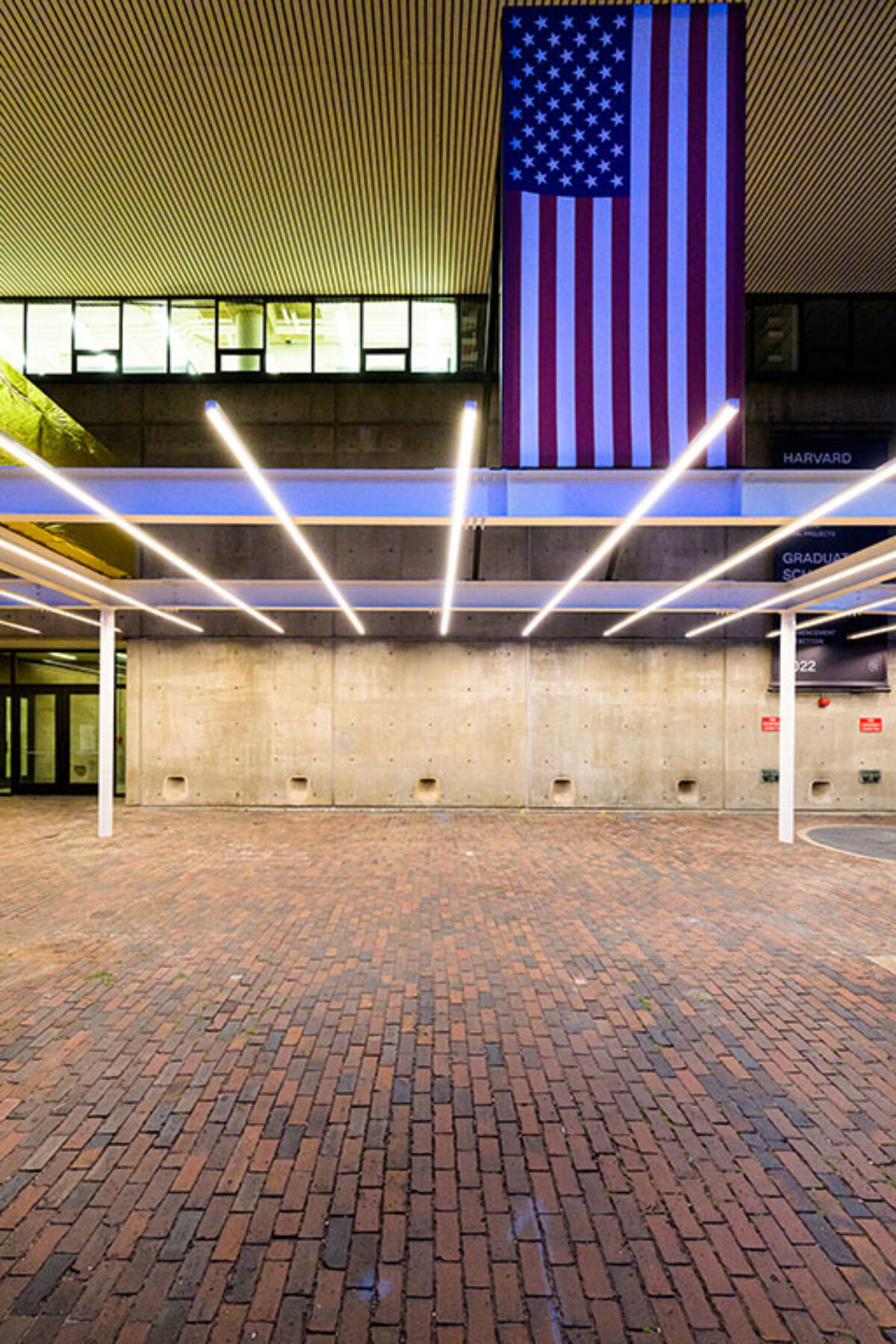As midterm elections approach in November across the United States and citizens exercise the right to vote, OFFICE Kersten Geers David Van Severen offer the following statement on the image of the flag that is included in American Architecture (Model), on view on the front patio of Gund Hall until April 2023.
Atop the pavilion stand three objects: a model of a technical box, a model of a solar panel, and a model of a flag. Together they stand as symbols of architecture. The simple structure of the pavilion foregrounds these technological and emblematic features as pure signifiers, emphasizing architecture’s representational dimension. But whereas the solar panel is a literal symbol of the urgent necessity to address climate change, the image of the United States flag provokes diverse interpretations and demands explanation.
The flag is a poignant symbol saturated with manifold meanings, any one of which may be true for those encountering it—not only within the United States, but also around the world, where nearly anyone who is confronted by the flag has been affected by some form of American hegemony. The flag epitomizes a fundamental contradiction central to the United States’ origin story—the way in which democratic values are and have been simultaneously extended and ruthlessly denied. Over the course of its political history, the flag has been claimed by both the right and left. It has stood as a symbol of liberation and colonization, war making and peace keeping. It has been taken up by abolitionist and pro-slavery causes, and has been championed by immigrants and nativists alike. Most recently, the flag has been embraced by demagogic populist and white nationalist movements, prompting liberals and progressives to distance themselves from it. Overall, it is important to acknowledge that through time the flag has served as the ultimate symbol of shifting, if not conflicting national values.
In the United States, the national flag is given a prominence rarely seen in other countries. It adorns government buildings and single-family homes. It hangs in airports and schools, and above the statue of John Harvard in Harvard Yard. As a commonplace object, it has been appropriated by consumerist culture and transformed into a pop symbol. It has also served as a means of exposing longstanding histories of violence, racism, and sexism, in works ranging anywhere from The Simpsons to works by visual artists including Jasper Johns, Cady Noland, Tseng Kwong Chi, David Hammons, Barbara Kruger, Gordon Parks, and Ed Ruscha.
The flag atop the pavilion is not intended as a real flag. It is an image of a flag printed on vinyl, as a billboard. Detached from its political context and aestheticized as an artwork or architectural ornament, we hope it sustains reinterpretation as a readymade, one that recalls the flag while creating critical distance and space for discussion and reflection in its abstraction. The pavilion was envisaged as a public space available for everyone’s use, as a place for debate and encounter, politics and culture, education and humanism, and most importantly one of embrace of the diversity of the Harvard community. We should not be naïve, however, and ignore the multitude of visceral and critical responses the image of the flag provokes. On the contrary, we hope to acknowledge and provide an opening for scrutiny of the flag’s symbolism, grounded in the perspectives and experiences of those who encounter it.
